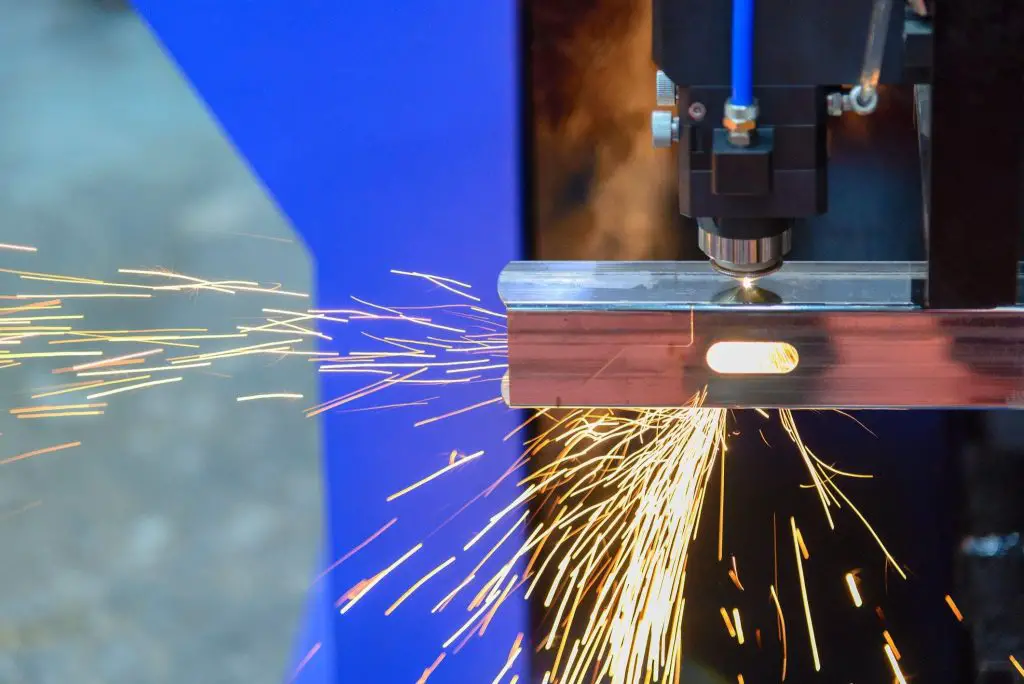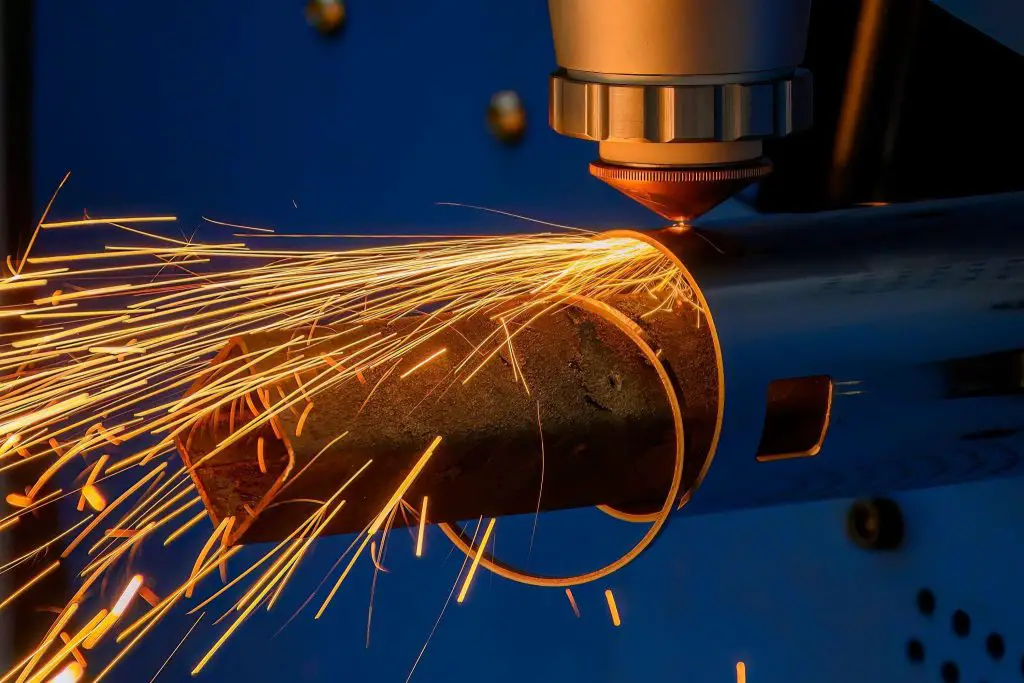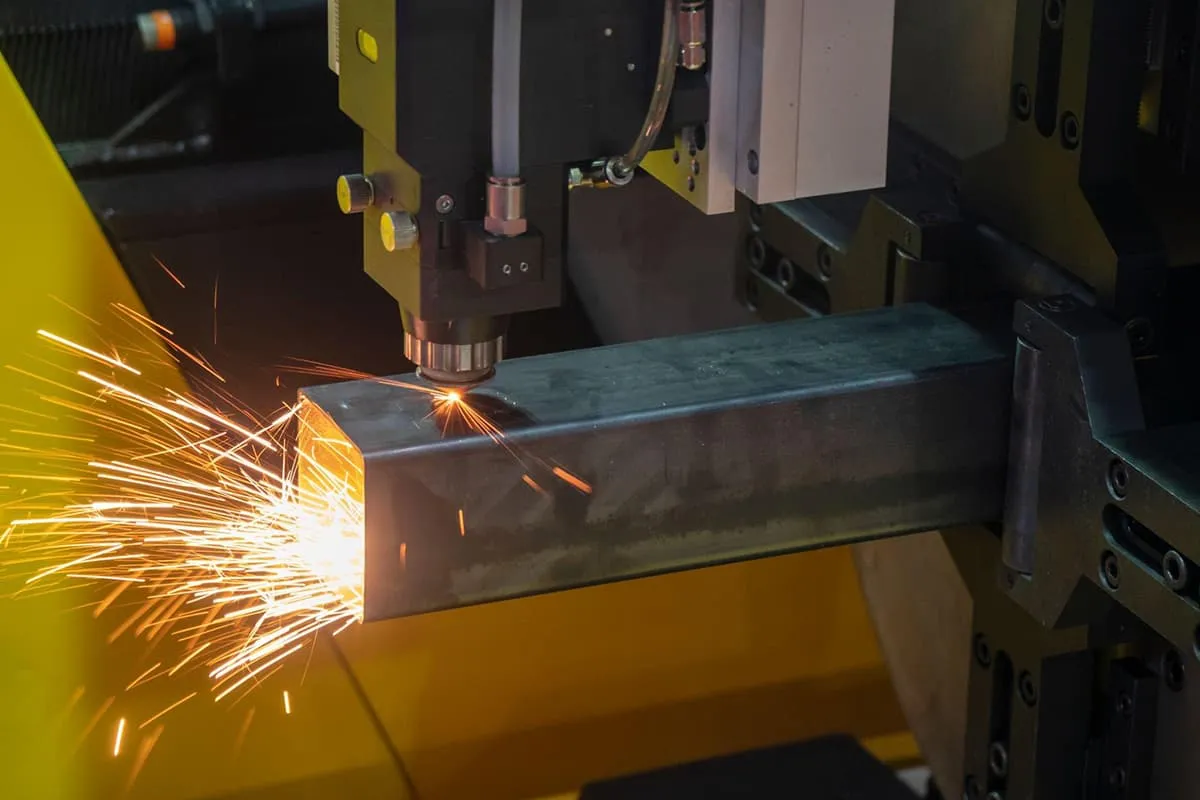Tube laser cutting has revolutionized the metal fabrication industry, offering precision and efficiency in creating complex designs. This advanced technology utilizes high-powered lasers to cut through various materials such as metals, plastics, and ceramics. For professionals and enthusiasts alike, understanding the relationship between cutting thickness and speed is essential to achieve optimal results in their projects.
The thickness of a material plays a crucial role in determining the speed at which it can be cut using tube laser technology. A “Tube Laser Cutting Thickness & Speed Chart” serves as an invaluable tool in understanding the capabilities and limitations of a laser cutter. This chart provides guidelines for the appropriate speed and power settings required for cutting materials of varying thicknesses with ease and accuracy.
By referring to a Tube Laser Cutting Thickness & Speed Chart, users can ensure the best performance from their equipment, while minimizing waste and producing high-quality results. This essential reference not only fosters efficiency in the cutting process but also contributes to the growth and success of the metal fabrication industry.
Understanding Tube Laser Cutting

Tube laser cutting is a manufacturing technology that utilizes lasers to cut various shapes and features in metal tubing. The process involves directing a high-powered laser beam, such as a fiber laser or CO2 laser, at the material that needs cutting. The accuracy and precision of the laser beam make it suitable for small, complex, and intricate cuts.
Fiber lasers and CO2 lasers are the two prominent types of lasers used in tube laser cutting. Fiber lasers generate light by pumping energy into a doped optical fiber; these lasers offer exceptional beam quality, outstanding precision, and high processing speeds. CO2 lasers, on the other hand, use a gas mixture of carbon dioxide, helium, and nitrogen to generate light. CO2 lasers deliver a larger heat-affected zone, which may lead to discoloration or warping in certain materials.
In addition to the laser type, the efficiency of a laser cutting process is determined by the laser cutting machine’s power. The more powerful the laser, the faster it can process material and the thicker the maximum cuttable material. Laser cutting machines come in various power levels ranging from low-powered diode lasers, which are suitable for thin materials, to high-powered industrial-grade lasers capable of processing thick and heavy materials.
Understanding the factors that influence cutting speed and thickness in tube laser cutting is crucial for designing and manufacturing efficient and high-quality products. Some of these factors include:
- Laser power: As previously mentioned, a more powerful laser allows for thicker materials to be cut and leads to higher cutting speeds.
- Material type: Different metals (e.g., steel, aluminum, copper) have different properties that may affect the laser’s efficiency and cutting speed.
- Beam quality: The quality of the laser beam has a direct impact on cutting speed and accuracy. A well-focused and stable beam will lead to faster and cleaner cuts.
A tube laser cutting thickness and speed chart provides essential information in helping manufacturers select the appropriate laser cutting machine and settings for the specific project. These charts typically present data in table format, disclosing essential details such as cutting speeds and maximum material thicknesses to match specific machine models, power ratings, and laser types. This information is crucial for achieving the desired cutting results while maintaining efficiency and cost-effectiveness.
Tube Laser Cutting Thickness & Speed Chart
| Material | Thickness (mm) | 1000W | 1500W | 2000W | 3000W | 4000W | 6000W |
|---|---|---|---|---|---|---|---|
| (m/min) | (m/min) | (m/min) | (m/min) | (m/min) | (m/min) | ||
| Carbon Steel Air | 1 | 12.0-15.0 | 15.0-20.0 | 25.0-30.0 | 28.0-35.0 | 30.0-38.0 | 35.0-42.0 |
| 2 | 3.5-4.5 | 5.0-8.0 | 7.0-10.0 | 8.0-12.0 | 10.0-16.0 | 20.0-28.0 | |
| 3 | 1.5-3.0 | 2.0-4.0 | 2.5-4.5 | 3.0-5.0 | 8.0-15.0 | ||
| 4 | 1.5-2.3 | 2.5-3.5 | 7.0-12.0 | ||||
| 5 | 1.0-2.2 | 5.0-9.0 | |||||
| 6 | 3.0-6.0 | ||||||
| Carbon Steel O2 | 1 | 15.0-22.0 | 18.0-25.0 | 22.0-30.0 | 25.0-38.0 | 30.0-44.0 | 35.0-48.0 |
| 2 | 3.5-5.0 | 3.8-5.0 | 5.0-6.0 | 5.5-7.0 | 5.5-7.7 | 6.0-8.25 | |
| 3 | 2.5-3.85 | 2.8-3.8 | 3.5-4.3 | 3.6-5.0 | 3.7-5.5 | 4.0-5.5 | |
| 4 | 2.0-3.3 | 2.3-3.5 | 2.8-4.0 | 3.0-4.5 | 3.5-4.62 | 3.5-5.0 | |
| 5 | 1.4-2.0 | 1.6-2.5 | 2.5-3.0 | 2.5-3.3 | 2.5-4.0 | 3.0-4.2 | |
| 6 | 1.2-1.65 | 1.4-1.8 | 2.2-2.5 | 2.3-2.8 | 2.5-3.52 | 2.6-3.52 | |
| 8 | 0.9-1.32 | 0.9-1.3 | 1.3-1.8 | 1.8-2.2 | 2.0-2.8 | 2.0-2.8 | |
| 10 | 0.6-0.9 | 0.8-1.2 | 1.2-1.5 | 1.2-1.6 | 1.2-2.2 | 1.8-2.3 | |
| 12 | 0.4-0.7 | 0.7-1.0 | 0.8-1.0 | 1.0-1.3 | 1.0-1.76 | 1.6-2.1 | |
| 16 | 0.5-0.7 | 0.6-0.8 | 0.6-0.9 | 0.7-1.0 | 0.7-1.0 | ||
| 20 | 0.5-0.8 | 0.6-0.9 | 0.65-0.95 | ||||
| 22 | 0.66-0.9 | 0.6-0.77 | |||||
| 25 | 0.4-0.65 | ||||||
| Stainless Steel N2 | 1 | 16.5-22.0 | 20.0-26.0 | 27.5-33.0 | 31.0-38.5 | 33.0-45.0 | 50.0-65.0 |
| 2 | 4.5-6.1 | 7.0-10.0 | 9.0-11.0 | 10.0-16.5 | 10.0-20.0 | 30.0-40.0 | |
| 3 | 2.0-3.1 | 4.5-5.5 | 4.5-5.5 | 7.0-10 | 7.5-12.0 | 18.0-25.0 | |
| 4 | 1.0-1.65 | 2.0-2.5 | 2.2-2.8 | 5.0-7.2 | 5.5-9.0 | 10.0-15.5 | |
| 5 | 0.4-0.7 | 1.5-2.0 | 1.5-2.0 | 1.8-2.45 | 4.0-5.5 | 8.0-13.5 | |
| 6 | 0.2-0.45 | 0.6-0.9 | 0.7-1.32 | 1.0-1.65 | 2.6-4.5 | 6.0-9.0 | |
| 8 | 0.2-0.45 | 0.35-0.6 | 1.2-2.0 | 1.6-2.8 | 4.0-5.5 | ||
| 10 | 0.7-1.0 | 0.7-1.65 | 1.8-2.8 | ||||
| 12 | 0.5-0.9 | 1.2-1.65 | |||||
| 14 | 0.8-1.2 | ||||||
| 16 | 0.6-0.9 | ||||||
| Aluminum N2 | 1 | 10.0-13.2 | 15.0-27.5 | 22.0-31.0 | 25.0-30.0 | 28.0-32.0 | 35.0-45.0 |
| 2 | 2.0-4.5 | 7.0-8.6 | 10.0-13.2 | 15.0-18.0 | 16.0-20.0 | 20.0-25.0 | |
| 3 | 0.6-1.32 | 2.5-4.0 | 5.0-6.6 | 7.0-8.0 | 10.0-12.0 | 14.0-16.0 | |
| 4 | 1.0-1.65 | 1.5-2.2 | 5.0-6.0 | 6.0-7.0 | 8.0-10.0 | ||
| 5 | 0.6-0.9 | 1.0-1.3 | 2.5-3.0 | 4.0-5.0 | 5.0-7.0 | ||
| 6 | 0.4-0.7 | 0.6-0.9 | 1.5-2.0 | 2.5-3.0 | 3.5-4.0 | ||
| 8 | 0.4-0.7 | 0.5-0.8 | 1.0-1.3 | 1.5-2.0 | |||
| 10 | 0.3-0.4 | 0.8-1.0 | 1.0-1.2 | ||||
| 12 | 0.6-0.8 | 0.6-0.7 | |||||
| 14 | 0.3-0.5 | 0.4-0.6 | |||||
| 16 | 0.3-0.4 | ||||||
| Brass N2 | 1 | 14.0-20.0 | 15.0-22.0 | 20.0-27.0 | 20.0-28.0 | 25.0-30.0 | 30.0-40.0 |
| 2 | 3.0-4.5 | 4.0-7.2 | 7.7-8.8 | 7.0-13.2 | 12.0-15.0 | 15.0-18.0 | |
| 3 | 1.0-1.55 | 1.1-1.5 | 3.0-4.5 | 5.0-7.2 | 5.5-7.7 | 12.0-14.0 | |
| 4 | 1.0-1.2 | 1.3-1.8 | 2.5-3.0 | 3.5-5.5 | 8.0-10.0 | ||
| 5 | 0.6-0.9 | 0.8-0.9 | 1.6-2.0 | 2.0-3.5 | 5.0-5.5 | ||
| 6 | 0.4-0.6 | 0.8-1.2 | 1.4-2.2 | 3.2-3.8 | |||
| 8 | 0.3-0.4 | 0.8-1.0 | 1.5-1.8 | ||||
| 10 | 0.4-0.6 | 0.8-1.0 | |||||
| 12 | 0.6-0.7 |
Factors Influencing Cutting Parameters
Power and Energy
The first key factor that influences the cutting parameters in tube laser cutting is the laser power and energy density. These two parameters are directly related to the wattage of the laser system being used. A higher wattage means more heat generated and subsequently faster cutting speeds.
The nozzle of the laser system also plays a crucial role in determining the power and energy density of the beam. Choosing the appropriate nozzle size is essential for optimizing the laser cutting process.

Focus and Spot Size
The focus of the laser system and the spot size on the cutting material is another significant factor that influences cutting parameters. By adjusting the lens and focal length, operators can control the heat distribution and penetration depth. Smaller spot sizes generally result in higher energy densities and allow for greater precision in tube laser cutting.
In contrast, larger spot sizes might not offer the same level of accuracy, but they can enable faster cutting speeds, making them suitable for applications that do not demand intricate detail.
Assist Gas and Pressure
The choice of assist gas and the appropriate gas pressure also significantly affects the cutting parameters. There are different types of gases widely used in the tube laser cutting industry such as oxygen, nitrogen, and compressed air. Each gas has its own unique properties, and these properties will impact the cutting process.
For instance, oxygen is known for its exothermic reactions, which can generate more heat within the process. This increased heat allows for faster cutting speeds, but it can compromise the quality of the cut. On the other hand, nitrogen and other inert gases, often referred to as auxiliary gases, produce a cleaner cut by minimizing heat-affected zones (HAZ). Nevertheless, they may require higher pressures and laser power to achieve optimal results.
The air assist provided by the assist gas is crucial in determining the cutting parameters. By changing the gas type or adjusting pressures, operators can fine-tune the cutting process to achieve desired outcomes.

